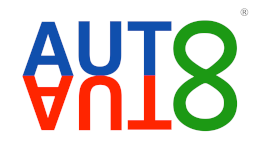-
🤔 What is SVS?
- Semantic search via deep-learning vector embeddings.
- A stupid-simple library for storing and retrieving your documents.
- Currently supports OpenAI and Ollama.
-
💩 Why is it stupid?
-
🧠 Is it possibly... smart in any way though?
- Maybe.
- It will squeeze the most juice from your machine: 🍊
- Optimized SQL
- Cache-friendly memory access
- Fast in the places that matter 🚀
- All with a simple Python interface
- Supports storing arbitrary metadata with each document. 🗃️
- Supports storing and querying (optional) parent-child relationships between documents. 👪
- Fully hierarchical - parents can have parents, children can have children, whatever you need...
- Supports storing an (optional) graph structure over your documents.
- So you can do GraphRAG!
- Batteries not included:
- This library only handles graph storage.
- You have to implement your own graph algorithms.
- Supports generic key/value storage, for those random things you don't know where else to put. 🤷
- Both sync and asyncio implementations:
- use the synchronous impl (
svs.KB) for scripts, notebooks, etc - use the asyncio impl (
svs.AsyncKB) for web-services, etc
- use the synchronous impl (
- 100% Python type hints!
SVS is stupid yet can handle a million documents on commodity hardware, so it's probably perfect for you.
Should you use SVS? SVS is designed for the use-case where:
- you have less than a million documents, and
- you don't add/remove documents very often.
If that's you, then SVS will probably be the simples (and stupidest) way to manage your document vectors!
pip install -U svsSVS is used in production by:
Here is the most simple use-case; it just queries a pre-built knowledge base! This particular example queries a knowledge base of "Dad Jokes" 🤩.
(taken from ./examples/quickstart.py)
import svs # <-- pip install -U svs
import os
from dotenv import load_dotenv; load_dotenv()
assert os.environ.get('OPENAI_API_KEY'), "You must set your OPENAI_API_KEY environment variable!"
#
# The database remembers which embeddings provider (e.g. OpenAI) was used.
#
# The "Dad Jokes" database below uses OpenAI embeddings, so that's why you had
# to set your OPENAI_API_KEY above!
#
# NOTE: The first time you run this script it will download this database,
# so expect that to take a few seconds...
#
DB_URL = 'https://github.com/Rhobota/svs/raw/main/examples/dad_jokes/dad_jokes.sqlite.gz'
def demo() -> None:
kb = svs.KB(DB_URL)
records = kb.retrieve('chicken', n = 10)
for record in records:
score = record['score']
text = record['doc']['text']
print(f" 😆 score={score:.4f}: {text}\n")
kb.close()
if __name__ == '__main__':
demo()SQLite and NumPy are fast, thus SVS is fast 🏎️. Our goal is to minimize the amount of work done at the Python-layer.
Also, your bottleneck will certainly be the remote API calls to get document embeddings (e.g. calling out to OpenAI's API to get embeddings will be the slowest thing), so it's likely not critical to further optimize the Python-layer bits.
The following benchmarks were performed on 2018-era commodity hardware (Intel i3-8100):
| Number of Documents | Load into SQLite | Get Embeddings for All Documents (remote API call) | Cosine Similarity + Sort + Retrieve Top-100 Documents 1 |
|---|---|---|---|
| 10,548 jokes 2 | 0.07 seconds | 80 seconds | 0.5 seconds (first query) + 0.011 seconds (subsequent queries) |
| 1,000,000 synthetic documents 3 | 8 seconds | 2 hours 4 | 2 minutes (first query) + 0.24 seconds (subsequent queries) |
This library logs using Python's builtin logging module. It logs mostly to INFO, so here's a snippet of code you can put in your app to see those traces:
import logging
logging.basicConfig(
level=logging.INFO,
format='%(asctime)s - %(name)s - %(levelname)s - %(message)s',
)
# ... now use SVS as you normally would, but you'll see extra log traces!svs is distributed under the terms of the MIT license.
Footnotes
-
This time does not include the time it takes to obtain the query string's embedding from the external service (i.e. from OpenAI's API); rather, it captures the time it takes to (1) compute the cosine similarity of the query string with all the documents' vectors (where embedding dimensionality is 1,536), then (2) sort the results, and then (3) retrieve the top-100 documents from the database. Note: The first query is slow because it must load the vectors from disk into RAM, while subsequent queries are fast since those vectors stay cached in RAM. ↩
-
This benchmark is from the Dad Jokes KB from this notebook. ↩
-
This benchmark is over one million synthetic documents, where those documents have an average length of 1,200 characters. Specifically, this notebook. ↩
-
This is an estimate based on the observed typical response times from OpenAI's embeddings API. For this test, we generate synthetic embeddings with dimensionality 1,536 to simulate the correct datasize and computation requirements as if we used "real" embeddings. ↩




